#139 January Status Report
January 11, 2019
As promised in Report 137, this month’s report provides a closer look at the completed installation of the canal lock in the EnterTRAINment Junction (EJ) layout’s Early Period. Limited for some time by leaks in the canal bed, the lower portion of the canal (near the appropriately-named “Canal Town”) has finally gotten the canal lock intended from the very early planning stages of the layout (Figure 1).
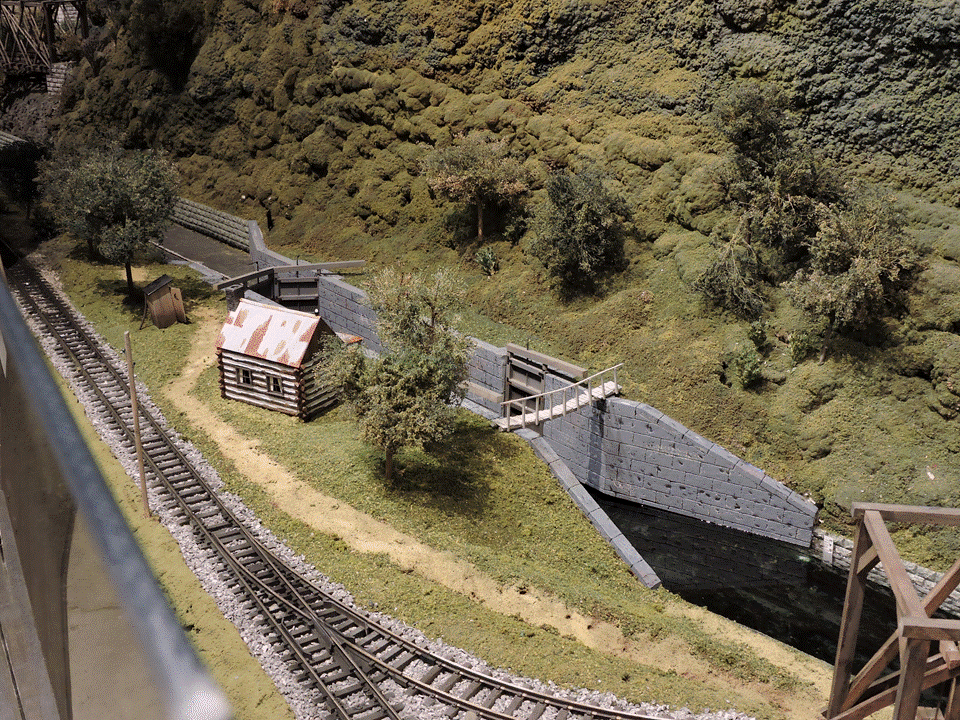 |
| Figure 1. Canal Lock Installation |
The top view in Figure 2 shows the details of the lock: the closed upper gates, with their manual operating levers spread wide; the open lower gates, with levers parallel to the channel; a bridge for the lock keeper to get to both sides of the lock; the indentations in the canal walls for the gates, so that they do not restrict the maximum width of the lock; the lock keeper’s cottage; and the keeper’s leaning outhouse with its stabilizing pole.
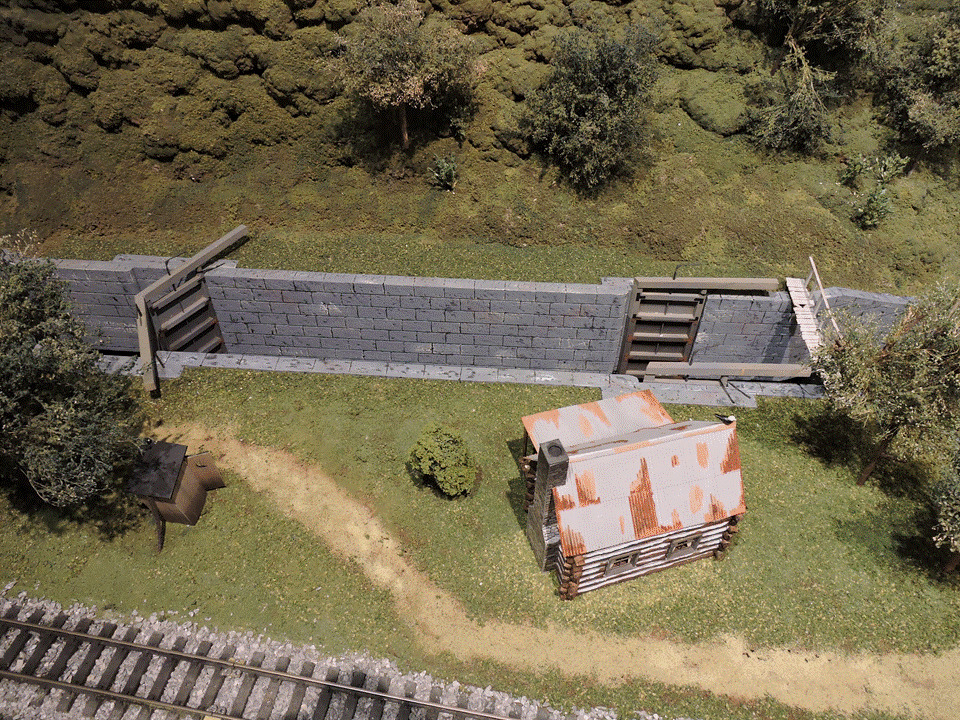 |
| Figure 2. Canal Lock Installation (Top View) |
Figure 3 shows a view of the lock from upstream. The L-shaped handles on top of the lock gates are the mechanism for raising and lowering a panel in each gate, called a “paddle,” which acts as a valve to allow water to flow into the lock through the upper gates, raising the water level when all gates were closed, and out of the lock through the lower gates, lowering the water level when all gates were closed. Note that the closed gates are not perpendicular to the canal walls. This takes advantage of the water pressure from the difference in water level outside and inside the lock to force the doors shut, reducing leakage, until the water level is equalized, at which time the gates can be opened. Because of the complexity of operating this system, the model is static, not operational.
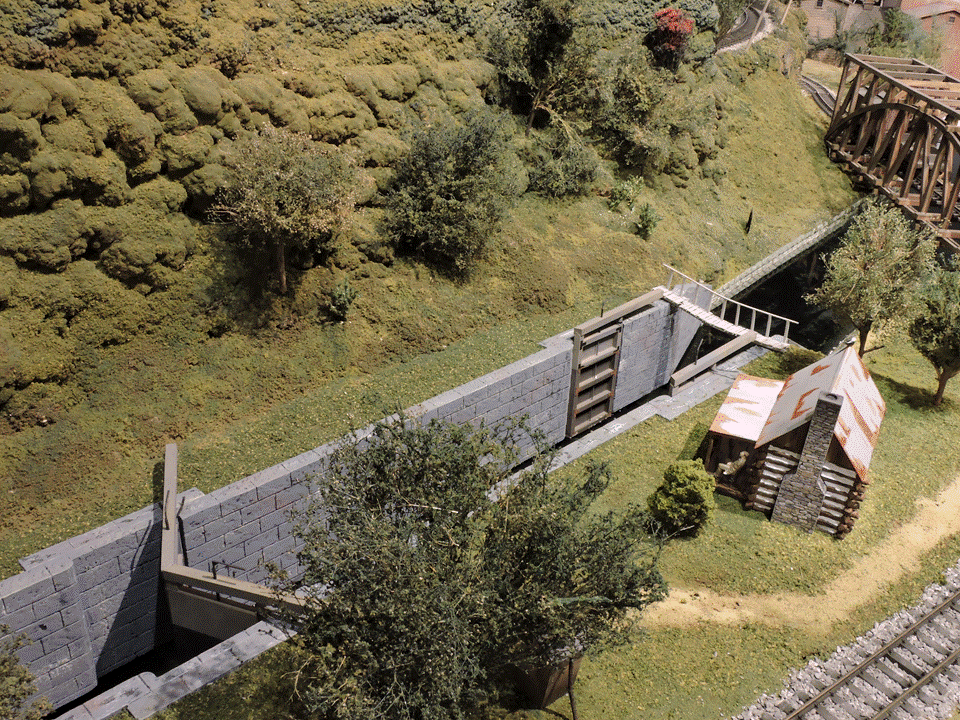 |
| Figure 3. Canal Lock from Upstream |
Figure 4 provides another view of the canal and its trackside details. If you look carefully, you’ll see the lock keeper sitting in his rocking chair on the cottage porch awaiting his next customer.
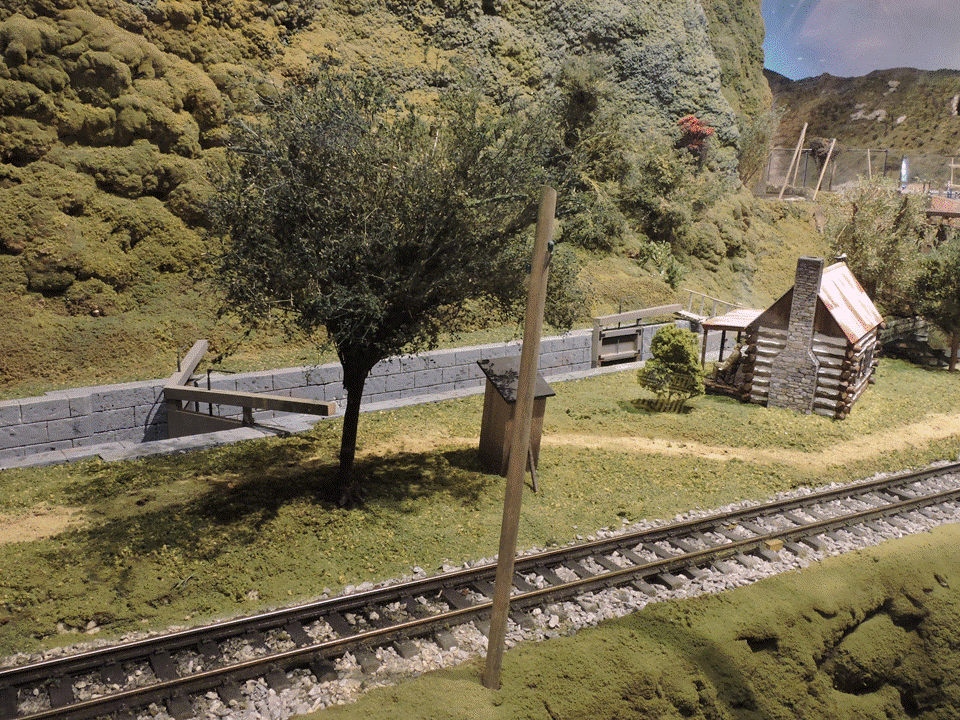 |
| Figure 4. Canal-Side Details |
Upstream of the lock, a sign “informs” canal users of the toll for various items of cargo on their canal boats (Figure 5).
 |
| Figure 5. Canal Toll Price Sign |
An item totally unrelated to the Early Period canal deserves mention and special recognition in this report because it was just installed and showcases the continued excellence in the modeling done by one of the EJ volunteers. The church at the end of the small aisle-side housing area in the Modern City has, since installation, been unlit inside, having no window openings with only blackness behind the mullioned window frames. That has now changed with the addition of window openings, simulated stained-glass windows, and bright interior lighting — a gorgeous improvement worthy of celebration (Figure 6). This is another example of a suggestion for improvement from the EJ Volunteers being turned into beautiful reality.
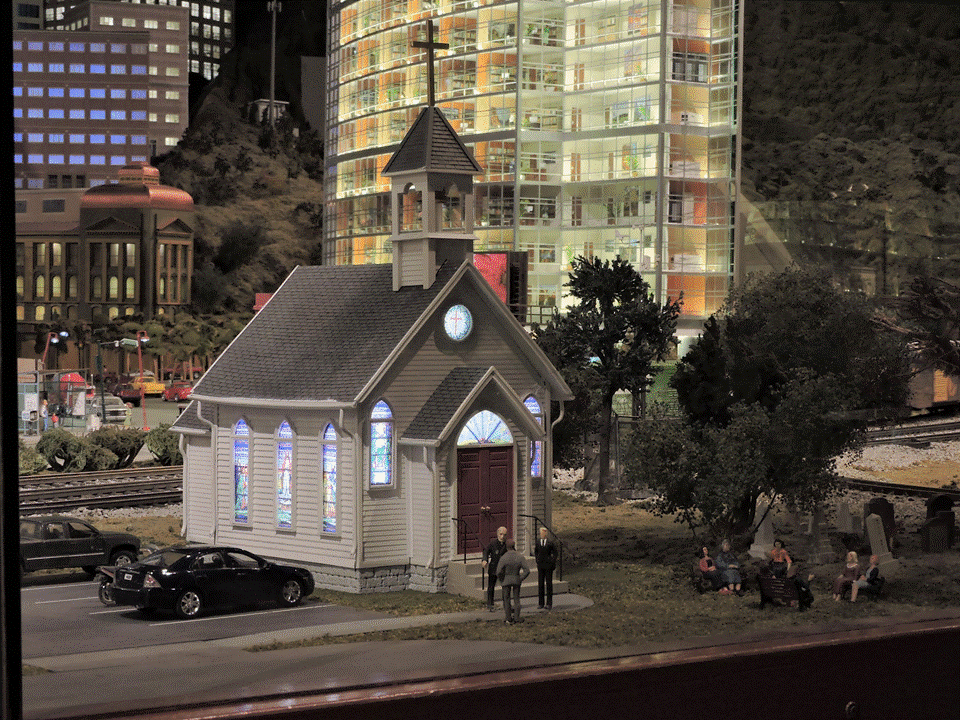 |
| Figure 6. Modern City Church |
I continue to be amazed by the superb quality of the modeling applied throughout the layout. The elements described above are outstanding examples of the layout’s cooperative art and artisanship implemented on a grand scale.
© 2018 Tom Bartsch
MVGRS Big Train Project Coordinator

 Tickets
Tickets Parties
Parties Shop
Shop Directions
Directions